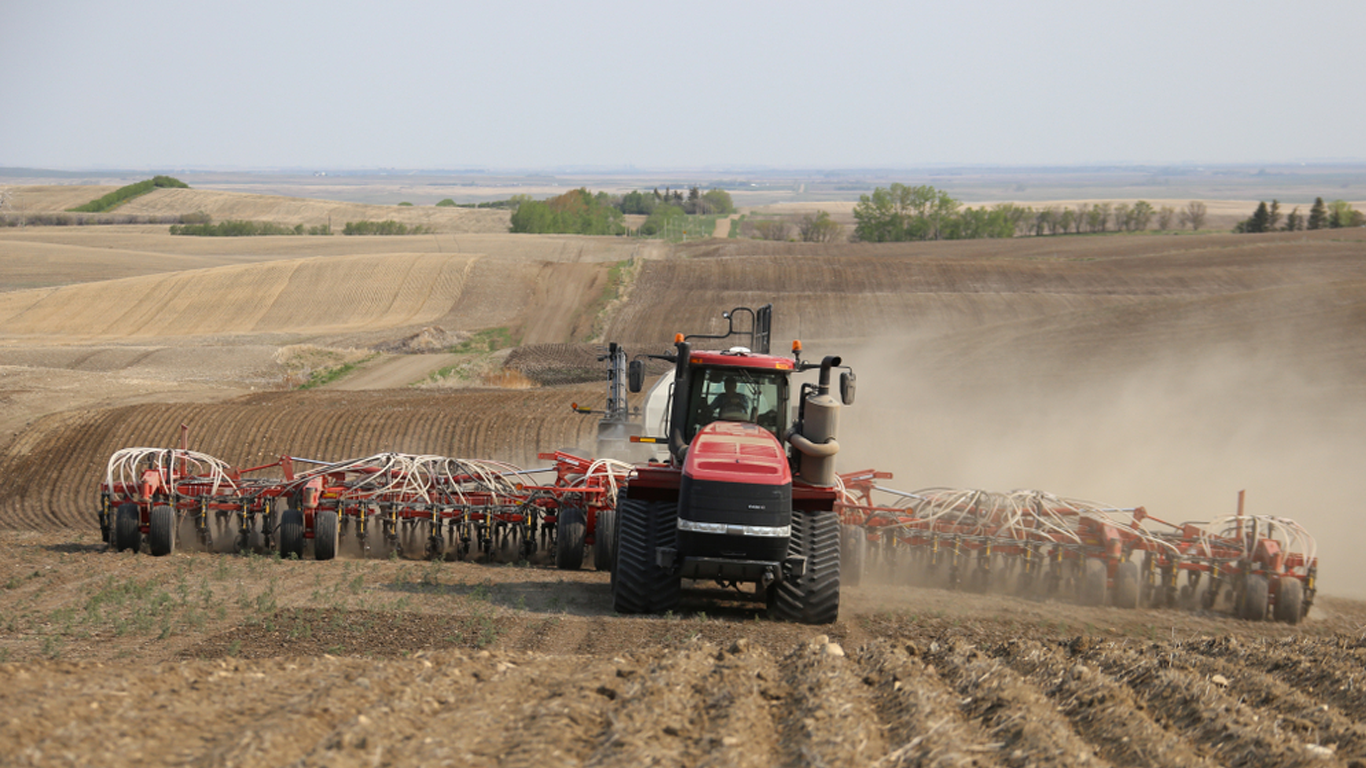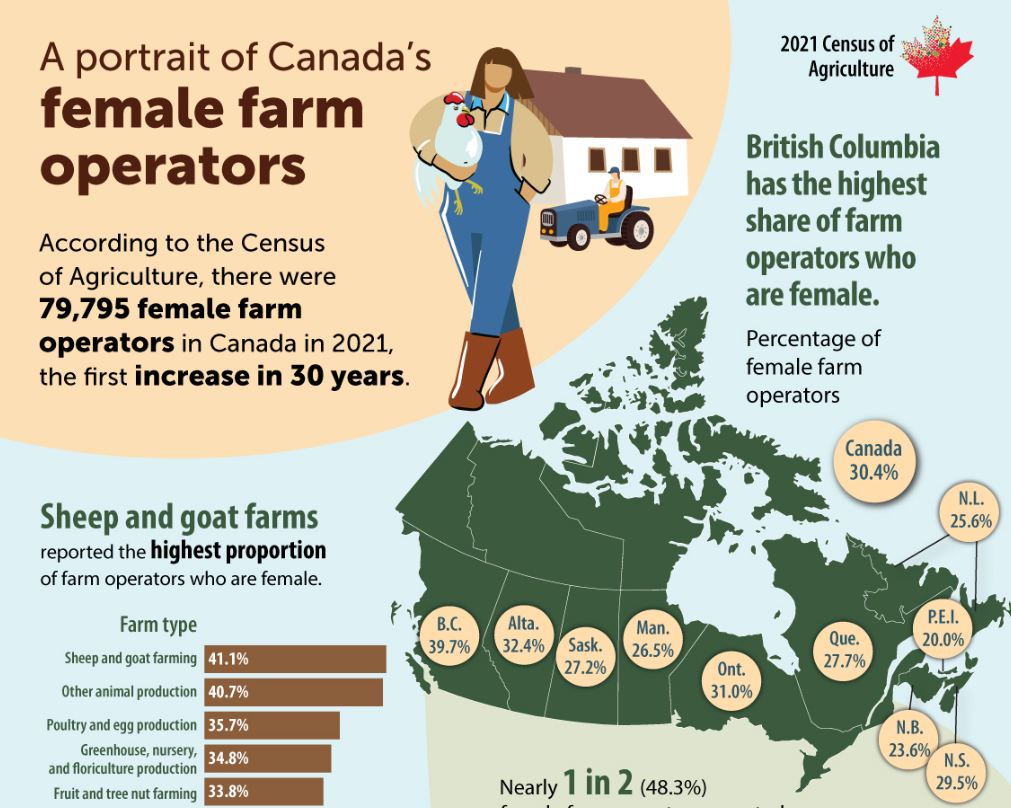
There are no true deserts in Canada per se, but Osoyoos in South Central British Columbia comes pretty close to meeting the definition. The Prairies, however, are prone to drought and our colleagues at Agriculture and Agri-Food Canada regularly monitor regions experiencing drought across Canada. To mark the upcoming World Day to Combat Desertification and Drought, let’s take a look at our vast reservoir of drought-related data.
Canada has a wealth of water, with some decidedly dry zones
In 2021, 1,225 cubic kilometres of renewable freshwater was generated in the south of Canada, where most people live. This volume corresponds to an average 0.47 cubic metres of water per square metre of area. To put this in perspective, in 2021, Canadian households used a total of 3.2 cubic kilometres of water nationally.
Of course, not all of this water is equally distributed across Canada. For example, water is found in abundance on Canada’s West Coast. Since the beginning of the new millennium, the annual average water yield in this region has ranged from 295.62 cubic kilometres in 2019 to 473.71 cubic kilometres in 2007.
By way of comparison, on the Prairies, the annual average water yield has ranged from 2.95 cubic kilometres in 2021 to 58.6 in 2011.
Farmers doing their bit to combat drought
There may be no better indicator of the scourge of drought in Canada than our crop data. In 2013, for example, farmers harvested a record high 37.6 million tonnes of wheat, over twice as much wheat as was produced in 2002 (16 million tonnes), during the worst drought of the 21st century in Canada.
Canadian farmers, however, have taken steps to mitigate against the negative effects of drought through various land management practices. According to the 2021 Census of Agriculture, for example, 59,684 farms reported no- or zero-till seeding, which improves soil structure and enhances water retention.
In 2021, a further 15,924 farms reported irrigating just under 1 million hectares of land, while 99,299 farms reported having shelterbelts or windbreaks to prevent erosion and improve water retention and 20,330 farms planted winter cover crops. Cover crops are planted to prevent erosion, improve soil quality, and enhance water retention.
Drought drags down Saskatchewan economy in 2021
The economic impact of drought is best illustrated through the example of Saskatchewan, where the agriculture, forestry, fishing and hunting sector alone generally accounts for 5% to 10% of annual gross domestic product in the province, depending on the harvest and other economic conditions.
In 2021, Saskatchewan (-2.4%) was the lone province to see its economy contract, mostly due to the worst drought in nearly two decades, which slashed crop production by almost half (47%) from a year earlier. Wheat production in the province fell by nearly half (-46%) and canola production was down by over one-third (-37%).

Description - This is an Infographic
This is a description of the infographic.
Drought saps hydroelectric power in 2024
A lack of rain can literally sap the energy out of Canada. In 2024, drought conditions worsened in central and eastern Canada, leading to lower hydroelectricity generation in Quebec (-6.4%), Newfoundland and Labrador (-8.6%), and Manitoba (-8.9%).
As a result, hydroelectricity generation declined 4.9% nationally from a year earlier to 341.8 million in 2024, and stood 3.5% lower than the five-year average going back to 2019.
While hydroelectricity represented more than half (56.1%) of Canada’s total electricity generation in 2024, this was its lowest share since 2016.
Despite its significant generation capacity, Canada briefly became a net electricity importer during the months of February, March, and April 2024, which was one of the most notable electricity stories of the year. This was the first time that imports outweighed exports since this data series was redesigned in 2016 and came as many provinces struggled with low hydroelectricity generation due to dry conditions.
This is a description.
Sustainable Development Goals
On January 1 2016, the world officially began implementation of the 2030 Agenda for Sustainable Development—the United Nations' transformative plan of action that addresses urgent global challenges over the next 15 years. The plan is based on 17 specific sustainable development goals.
Sustainable Development Goals Data Hub an example of how Statistics Canada supports the reporting on the Global Goals for Sustainable Development. It will be used in helping to measure the following goals:
Note to readers
This is a note to readers.
📲 Looking for more? Staying informed has never been easier!
Follow the “Environment” subject in the StatsCAN app to receive personalized updates and stay connected with the most recent articles, reports and analyses.
Contact information
New Block creation test.
Contact information
------For more information, contact the Statistical Information Service (toll-free 1-800-263-1136; 514-283-8300; infostats@statcan.gc.ca) or Media Relations (statcan.mediahotline-ligneinfomedias.statcan@statcan.gc.ca).
